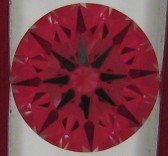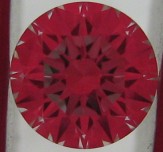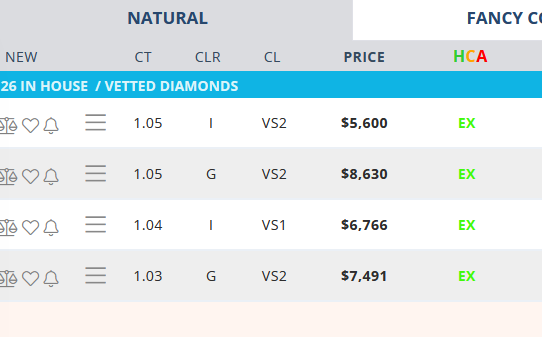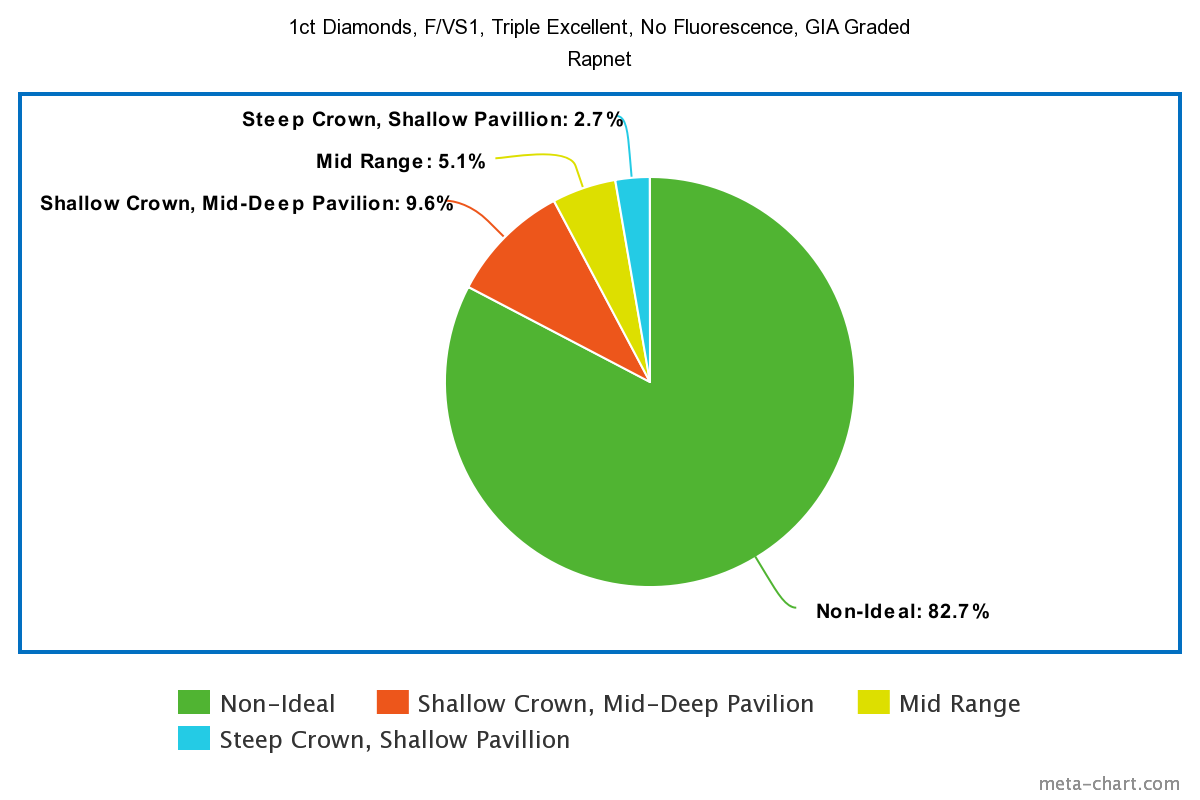23 years ago, in 2000, Melbourne gemmologist Garry Hollway, developed the Holloway Cut Adviser, more commonly known as the HCA. Essentially this tool took the proportions of a round brilliant diamond (table, depth, crown angle and pavilion angle) and produced a rating that judged how well the diamond was cut. At the time, it was a very useful tool, as GIA hadn’t released their cut grading system, AGS Labs didn’t exist yet and void of the transparency that the internet provides, the diamond industry relied more on bogus terms such as “Belgian Ideal Cut” and “Russian Ideal Cut” to describe the cut of a diamond. However, beginning in the mid-2000s, a number of things happened that seemed to make the HCA obsolete, such as GIA introducing their cut grade, AGS Labs opening and more vendors providing detailed cut analysis online. So, is the HCA a useful tool in this day and age, or should it be consigned to a museum?
The Problem with The GIA Excellent Grade and how the HCA Solves This.
The simple problem with the GIA excellent grade is that it is far too broad, meaning that whilst the best cut diamonds receive an excellent grade, so do not so well cut diamonds. In fact, since its inception in 2005, the excellent cut grade has grown to be so broad, that even diamonds with a 64.2 percent depth receive the excellent grade. The HCA solves this problem by awarding only the best cut diamonds the top grade. This of course isn’t very difficult, as the easiest, yet most important theory to understand to judge a diamond’s cut grade is the inverse crown-pavilion angle theory.
As I wrote in 2007, the main problem with the GIA cut grade is that it favours deeper pavilion angles over shallower ones, to the point where ideal cut diamonds with a pavilion angle of 40.4 degrees and a 35 degree crown angle are downgraded to “Very Good”, whilst diamonds with a 41.8 degree pavilion angle still retain the excellent cut grade. These diamonds, termed “Steep / Deep” diamonds tend to lack light performance and contrast, especially in the middle of the diamond. “Steep / Deep” diamonds are quite rightly, penalised by the HCA.


Above: Two GIA triple excellent diamonds under the Ideal-Scope. The one on the left is ideal cut and the one on the right is “Steep / Deep”
The Problem with the HCA
The HCA, along with Garry Holloway himself have garnered a lot of controversy over the years. Within the diamond industry, there exists a lot of people that are either “pro-Holloway” or “anti-Holloway”. However, I think the criticism of the HCA falls into three categories:
- Garbage In / Garbage Out: The HCA only takes into account four parameters, and if they are taken from a GIA certificate, these will be rounded figures. Thus, it could be said that the HCA is never very accurate, given the data that is input isn’t 100% accurate. Similarly, it doesn’t take into account the minor facets of a diamond. Therefore, any painting or digging is not recognised by the HCA. However, to its defence, the HCA does label itself as a “rejection tool” that should not be used solely to select a diamond.
- One Man’s Opinion: The HCA, whilst having a perfectly accurate scientific basis, like any cut grading system, comes down to the opinion of one or more people in order to assign grades. Whilst the GIA cut grading system tends to favour deep pavilions, conversely, the HCA tends to favour shallower diamonds, which from a light performance perspective is the correct thing to do, but may lead to too much contrast, or a fish-eye effect. In addition to this, diamonds on the borderline of each grade, may be perfectly fine, and unfairly downgraded.
- Anti-Holloway Bias: As mentioned earlier, a lot of people are firmly in to “pro-Holloway” and “anti-Holloway” camp. The mere mention of the HCA or Ideal-Scope may spur some jewellers to go on a lengthy “anti-Holloway” tirade, with my favourite being this fantastic piece of prose by New York jeweller Leon Mege.

Above: It was Putin and the kangaroos all along.
Money, Money, Money!
The elephant in the room is that the HCA has always been linked to the Pricescope forums, a website that Garry Holloway has part ownership in. Billed as an educational forum, it makes money from display advertising, much like most other websites, but also from payments from so-called “Vetted Vendors”. This has lead to many in the industry criticising the HCA and Pricescope due to a perceived conflict of interest, as the HCA can be used as a sales tool for diamonds from these “vetted vendors”.
More recently, the HCA has moved from being a free tool, to being a paid only tool. I’m not sure if anyone actually pays for the HCA, however, the HCA is now used prominently in the Pricescope diamond search, thus cementing its use merely as a sales tool.

Above: HCA is now used merely as a sales tool.
Advice to Consumers
15 to 20 years ago, I encountered a lot of consumers were using the HCA. Nowadays, I think only one customer in the past three years has mentioned the HCA, so its popularity certainly is dwindling. The truth of the matter is that the HCA tries to solve one problem – that is, determining whether a diamond is ideal cut or not. However, given the technology available today, it must be said that the HCA does a very poor job at this.
My advice to consumers wanting to buy an ideal cut diamond would be to follow these simple rules:
- Choose a jeweller who specialises in ideal cut diamonds and uses tools such as the Ideal-Scope, ASET and/or one of the many other tools used to showcase ideal cut diamonds.
- Recognise that every jeweller will have his or her own opinion, usually in order to sell you something. Therefore, it is important to not only consider price, but also the light performance, along with the other characteristics of a diamond. Whilst some jewellers may try to sell you a well priced diamond that they say is ideal cut, when it really isn’t, conversely, others may try to sell you a diamond at a premium price due to reasons that make no sense, nor add any value to the diamond.
- Don’t fall for the “GIA Triple Excellent” trap. GIA’s grading does not guarantee an ideal cut, in fact, a quick search for 1 carat, F/VS1 triple excellent GIA graded diamonds show that only 17.3% would be considered ideal cut by us.

Above: Chart showing that less than 20% of GIA triple excellent diamonds are actually ideal.